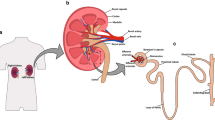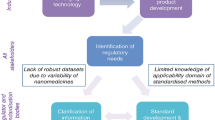Abstract
Forsythiaside was characterized by low intestinal absorption by in situ rat experiment and Caco-2 cells. The mechanisms behind this low absorption had not yet been elucidated. The purpose of this study was to investigate the role of efflux transporters in the intestinal absorption of forsythiaside as a potential mechanism for its low small-intestinal absorption following oral administration. Polarized MDCKII cell lines stably transfected with human or murine complementary DNA encoding for various efflux transporters (P-gp/MDR1, MRP2 and Bcrp1) were used to study transepithelial transport of forsythiaside and compare results with the MDCKII-Wild type cells. The transportation inhibitors GF120918, MK571 and Ko143 were used to investigate the transport mechanism. The active transport of forsythiaside was found in MDCKII-WT cells. The MDCKII-MRP2 and MDCKII-Bcrp1 cells significantly increased forsythiaside efflux ratio compared with the parental cells due to the apically directed transport by MRP2 and Bcrp1, respectively. The efflux ratios in MRP2 and Bcrp1 transfected cell lines were greatly decreased in the presence of MK-571 and Ko143, respectively, which indicated that forsythiaside efflux by MRP2 and Bcrp1 were significantly inhibited by their selective inhibitors. MDCKII-MDR1 cells did not exhibit a significant reduction in the forsythiaside efflux compared with the parental cells, indicating that it was not a good substrate for MDR1. And the results were then validated by the in situ experiment. This study presents direct evidence that forsythiaside is effluxed by both MRP2 and Bcrp1, which may contribute to its poor oral bioavailability.


Similar content being viewed by others
References
Amidon GL, Lennernas H, Shah VP, Crison JR (1995) A theoretical basis for a biopharmaceutic drug classification: the correlation of in vitro drug product dissolution and in vivo bioavailability. Pharm Res 12:413–420. doi:10.1023/A:1016212804288
Arik D, Amidon GL (2009) Small intestinal efflux mediated by MRP2 and BCRP shifts sulfasalazine intestinal permeability from high to low, enabling its colonic targeting. Am J Physiol Gastrointest Liver Physiol 297:371–377. doi:10.1152/ajpgi.00102.2009
Artursson P, Palm K, Luthman K (2001) Caco-2 monolayers in experimental and theoretical predictions of drug transport. Adv Drug Deliv Rev 46:27–43. doi:10.1016/S0169-409X(00)00128-9
Barr WH, Riegelman S (1970) Intestinal drug absorption and metabolism I: comparison of methods and models to study physiological factors of in vitro and in vivo intestinal absorption. J Pharm Sci 59:154–163. doi:10.1002/jps.2600590204
Barthe L, Woodley J, Houin G (1999) Gastrointestinal absorption of drugs: methods and studies. Fundam Clin Pharmacol 13:154–168. doi:10.1111/j.1472-8206.1999.tb00334.x
Breedveld P, Beijnen JH, Schellens JH (2006) Use of P-glycoprotein and BCRP inhibitors to improve oral bioavailability and CNS penetration of anticancer drugs. Trends Pharmacol Sci 27:17–24. doi:10.1016/j.tips.2005.11.009
Burger H, van Tol H, Boersma AWM, Brok M, Wiemer EAC, Stoter G, Nooter K (2004) Imatinib mesylate (STI571) is a substrate for the breast cancer resistance protein (BCRP)/ABCG2 drug pump. Blood 104:2940–2942
Cheng KC, Li C (2008) Prediction of oral drug absorption in humans—from cultured cell lines and experimental animals. Expert Opin Drug Metab Toxicol 4:581–590. doi:10.1517/17425255.4.5.581
Chinese Pharmacopoeia Commission (2010) Pharmacopoeia of the people’s republic of China volume I. People’s Medical Publishing House, Beijing
Dahan A, Amidon GL (2009) Small intestinal efflux mediated by MRP2 and BCRP shifts sulfasalazine intestinal permeability from high to low, enabling its colonic targeting. Am J Physiol Gastrointest Liver Physiol 297:G371–G377
Delie F, Rubas W (1997) A human colonic cell line sharing similarities with enterocytes as a model to examine oral absorption: advantages and limitations of the Caco-2 model. Crit Rev Ther Drug Carrier Syst 14:221–286
Ebert B, Seidel A, Lampen A (2005) Identification of BCRP as transporter of benzo[a]pyrene conjugates metabolically formed in Caco-2 cells and its induction by Ah-receptor agonists. Carcinogenesis 26:1754–1763. doi:10.1093/carcin/bgi139
Fang LQ, Guo JX (1990) Development of the study on Fructus forsythiae. Zhong Yao Cai 12:35–36
Hu JK, Xu KJ, Wang YH, Sun KX, Wang D (2001) Study on the in vitro antiviral effect of forsythiaside. Chin J Tradit Med Sci Tech 8:89
Hu JK, Qu FJ, Sun KX, Wang YH (2004) Experiment study on the induction of α-interferon of human leucocyte in vitro by forsythiaside. Chin J Tradit Med Sci Tech 11:355–356
Jin H, Zuo JF, Li JS (2006) Study on the pharmacology of phenylethanoid glycosides. Lishzhen Med Mater Med Res 17:440–444
Konsoula R, Jung M (2008) In vitro plasma stability, permeability and solubility of mercaptoacetamide histone deacetylase inhibitors. Int J Pharm 361:19–25. doi:10.1016/j.ijpharm.2008.05.001
Kruijtzer CMF, Beijnen JH, Rosing H, ten Bokkel Huinink WW, Schot M, Jewell RC, Paul EM, Schellens JHM (2002) Increased oral bioavailability of topotecan in combination with the breast cancer resistance protein and p-glycoprotein inhibitor GF120918. J Clin Oncol 20(13):2943–2950. doi:10.1200/JCO.2002.12.116
Kuang HX, Zhang N, Lu ZB (1988) Antibacterial constituents of the unripe fruit of Forsythia suspensa (Thunb.) Vahl. Zhong Yao Tong Bao 13(32–34):62–63
Lau YY, Okochi H, Huang Y, Benet LZ (2006) Multiple transporters affect the disposition of atorvastatin and its two active hydroxyl metabolites: application of in vitro and ex situ systems. J Pharmacol Exp Ther 316:762–771. doi:10.1124/jpet.105.093088
Letrent SP, Pollack GM, Brouwer KR, Brouwer KLR (1999) Effect of a potent and specific P-glycoprotein inhibitor on the Blood-Brain Barrier distribution and antinocieptive effect of morphine in the rat. Drug Metab Dispos 27:827–834
Li YX, Jiang XH, Liang HY, Li X (2008) Determination of forsythiaside in rat plasma by high-performance liquid chromatography and its application to pharmacokinetic studies. Biomed Chromatogr 22:361–366. doi:10.1002/bmc.940
Li YX, Peng C, Ye LH, Zhang RQ, Jiang XH (2011) Investigation on the absorption of phillyrin and forsythiaside in rat digestive tract. Eur J Drug Metab Pharmacokinet 36:79–85. doi:10.1007/s13318-011-0031-3
Liu J, Zhang LW (2006) Functions of forsythiaside on the damage of DNA induced by hydroxyl radical. J Shanxi Chin Med Univ 7:23–24
Matsson P, Englund G, Ahlin G, Bergström CA, Norinder U, Artursson P (2007) A global drug inhibition pattern for the human ATP-binding cassette transporter breast cancer resistance protein (ABCG2). J Pharmacol Exp Ther 323:19–30. doi:10.1124/jpet.107.124768
Matsson P, Pedersen JM, Norinder U, Bergström CA, Artursson P (2009) Identification of novel specific and general inhibitors of the three major human ATP-binding cassette transporters P-gp, BCRP and MRP2 among registered drugs. Pharm Res 26:1816–1831. doi:10.1007/s11095-009-9896-0
Meaney C, O’Driscoll C (1999) Mucus as a barrier to the permeability of hydrophilic and lipophilic compounds in the absence and presence of sodium taurocholate micellar systems using cell culture models. Eur J Pharm Sci 8:167–175. doi:10.1016/S0928-0987(99)00007-X
Ming DS, Yu DQ, Yu SS (1999) Two new caffeyol glycosides from forsythia suspensa. J Asian Nat Prod Res 43:327–335. doi:10.1080/10286029908039882
Ng SP, Wong KY, Zhang L, Zuo Z, Lin G (2004) Evaluation of the first-pass glucuronidation of selected flavones in gut by Caco-2 monolayer model. J Pharm Pharm Sci 8:1–9
Rautio J, Humphreys JE, Webster LO, Balakrishnan A, Keogh JP, Kunta JR, Serabjit-Singh CJ, Polli JW (2006) In vitro P-glycoprotein inhibition assays for assessment of clinical drug interaction potential of new drug candidates: a recommendation for probe substrates. Drug Metab Dispos 34:786–792. doi:10.1124/dmd.105.008615
Schinkel AH, Jonker JW (2003) Mammalian drug efflux transporters of the ATP binding cassette (ABC) family: an overview. Adv Drug Deliv Rev 55:3–29. doi:10.1016/S0169-409X(02)00169-2
Tang F, Horie K, Borchardt RT (2002) Are MDCK cells transfected with the human MRP2 gene a good model of the human intestinal mucosa? Pharm Res 19:773–779. doi:10.1023/A:1016192413308
Van de Wetering K, Burkon A, Feddema W, Bot A, de Jonge H, Somoza V, Borst P (2009) Intestinal BCRP/Bcrp1 and MRP3/Mrp3 are involved in the pharmacokinetics of resveratrol. Mol Pharmacol 75:876–885. doi:10.1124/mol.108.052019
Wang GN, Pan RL, Liao YH, Chen Y, Tang JT, Chang Q (2010) An LC-MS/MS method for determination of forsythiaside in rat plasma and application to a pharmacokinetic study. J Chromatogr B Analyt Technol Biomed Life Sci 878:102–106. doi:10.1016/j.jchromb.2009.11.029
Yamashita S, Furubayashi T, Kataoka M, Sakane T, Sezaki H, Tokuda H (2000) Optimized conditions for prediction of intestinal drug permeability using Caco-2 cells. Eur J Pharm Sci 10:195–204. doi:10.1016/S0928-0987(00)00076-2
Yazaki K (2006) ABC transporters involved in the transport of plant secondary metabolites. FEBS Lett 580:1183–1191. doi:10.1016/j.febslet.2005.12.009
Zhang W, Zhang HM, Guo ML, Zhang Y (2000) Study on the pharmacology of forsythiae fructus. Chin J Mod Appl Pharm 1:7–10
Zhang LW, Zhao CG, Yang P (2003) Study on the antioxidant activity and structure–activity relationship of forsythiaside. Chin Pharm J 38:334–336
Acknowledgments
Project supported by the National Natural Science Foundation of China (Grant No. 81102794/H2803), China Postdoctoral Science Foundation (No. 20100471662) and PhD Programs Foundation of Ministry of Education of China (No. 20105132120001).
Author information
Authors and Affiliations
Corresponding author
Rights and permissions
About this article
Cite this article
Li, YX., Zhang, RQ. & Peng, C. Assessment and modulation of forsythiaside absorption with MDCKII cells and validation with in situ intestinal experiment. Eur J Drug Metab Pharmacokinet 37, 179–186 (2012). https://doi.org/10.1007/s13318-012-0088-7
Received:
Accepted:
Published:
Issue Date:
DOI: https://doi.org/10.1007/s13318-012-0088-7




